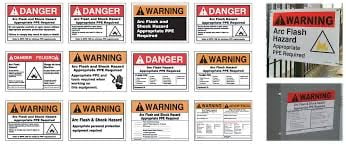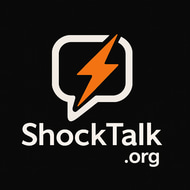How to Work with Arc Flash Labels, PPE Categories, and NFPA 70E Updates
Arc flash safety is the primary defense when working with energized equipment to prevent catastrophic injury or death. Arc flash label comprehension, proper PPE selection, and ongoing NFPA 70E knowledge remain key responsibilities for electricians, maintenance technicians, and safety managers. This instructional document provides information on interpreting arc flash labels accurately while implementing PPE Category tables and adjusting to new NFPA 70E modifications that affect practical electrical work.
PRO ACCESS
4/14/20252 min read


What Is an Arc Flash Label?
NFPA 70E Article 130.5(H) requires arc flash labels to be attached to electrical equipment that presents an arc flash risk. Arc flash labels are usually installed following an arc flash risk assessment to help workers comprehend essential safety information.
· The incident energy level at a specific working distance
· The required PPE category
· The arc flash boundary
· The equipment voltage level
· Shock boundaries for approach
Sample Label Elements:
Field
Description
Incident Energy
Expressed in cal/cm², tells you how much thermal energy you’re exposed to at a set distance (usually 18 inches).
Arc Flash Boundary
The minimum distance where an unprotected worker could receive a second-degree burn.
Working Distance
Typically, 18 inches; used to calculate incident energy.
PPE Required
Specific PPE needed to perform energized work safely.
Shock Protection
Approach boundaries and required voltage-rated gloves and tools.
How to Interpret PPE Categories
There are two methods for selecting PPE per NFPA 70E:
1. Incident Energy Analysis Method
If your label lists cal/cm², use calorie-rated clothing that meets or exceeds the incident energy listed. For example:
• 8.7 cal/cm² = Wear an arc-rated suit rated at least 8.7 cal/cm².
This method is precise but requires a completed arc flash study.
2. PPE Category Method
If no incident energy is listed, refer to NFPA 70E Table 130.7(C)(15)(c) for equipment types and conditions. You’ll find four categories:
PPE Category
Min. Rating
Example Tasks
1
4 cal/cm²
Operating a breaker < 240V
2
8 cal/cm²
Working on control panels
3
25 cal/cm²
Voltage testing in MCCs
4
40 cal/cm²
Inserting/removing draw-out breakers
Each category outlines the arc-rated clothing, gloves, face shields, balaclavas, and other PPE you must wear.
Important: You cannot mix methods—stick with one per piece of equipment or task.
2024-2025 NFPA 70E Key Updates (Next Cycle)
As NFPA 70E updates on a 3-year cycle, the 2024/2025 review process has introduced a few key discussions (some of which will likely be finalized in the 2026 edition):
1. Clearer Definitions of “Normal Operation”
Expect better-defined conditions for when it’s acceptable to operate energized equipment without full arc flash PPE.
• Must be properly installed, maintained, and closed/enclosed.
• Must not show signs of imminent failure.
2. Emphasis on Human Performance Tools
To reduce human error, task planning, checklists, peer checks, and job hazard analysis (JHA) will be promoted more prominently.
3. Updated Tables
The PPE tables in Article 130.7 will be reviewed and adjusted for modern equipment types and arc studies.
• The “Yes/No” column for arc flash PPE in the task tables may become more granular.
• Stronger language may guide the use of energized work permits.
Pro Tips for the Field
• Always read the label before working—it’s your snapshot of danger.
• Keep a calibrated IR thermometer handy to identify overheating signs before opening equipment.
• Use category-rated PPE kits for commonly encountered gear (480V panels, MCCs, etc.).
• If your facility hasn’t had an arc flash study in 5 years, it’s time to reassess (per NFPA 70E 130.5(G)).
Bottom Line
Arc flash safety starts with understanding the label, choosing the right PPE for the task, and keeping up with NFPA 70E changes. Whether testing voltage in a live panel or opening a transformer cabinet, your safety depends on your knowledge, preparation, and PPE.
ShockTalk: Your Code-Safe Guide
We help electricians, contractors, and DIYers build safer systems with real-world electrical expertise and simplified NEC guidance.
Expertise
Want Tips from a Master Electrician?
Email: info@shocktalk.org
Support Hours: Mon–Fri, 8am–6pm CST
817-716-1579
© 2025. All rights reserved.
